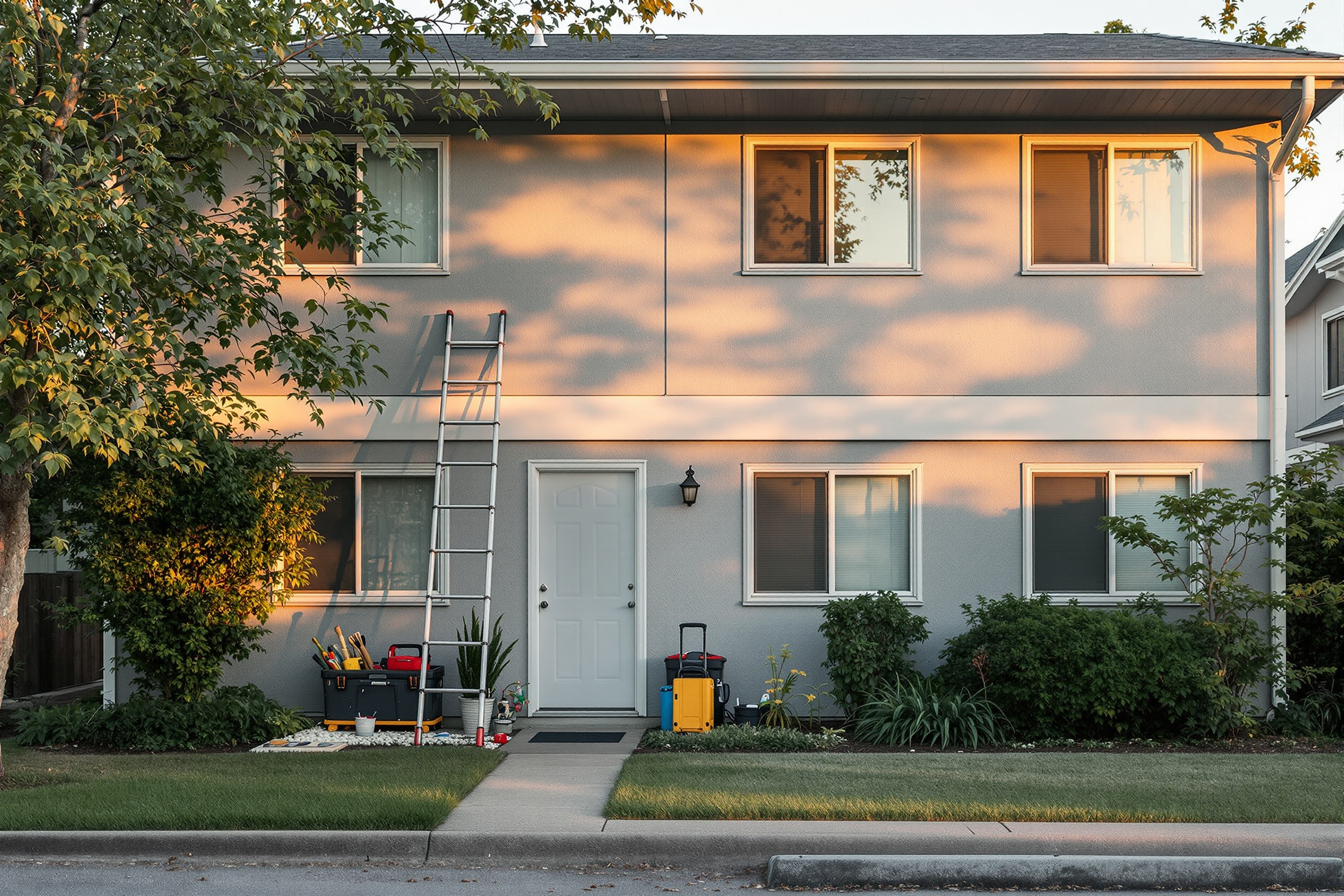Whether you’re a first-time landlord, an accidental landlord, or an experienced landlord with a new property, it can be hard to figure out how much to charge for rent. Charge too little and you could be leaving money on the table. Charge too much and you may have trouble finding tenants. So how do you calculate the right rent to charge?
We’ve got you covered. We’ll explain how to find the perfect rent to charge and even how to charge more for your property. Let’s get started.
5-Step Process to Calculate Your Perfect Rent Price
Use the worksheet below to turn raw numbers into a rent figure that keeps your cash flow healthy and your property competitive.
Step 1: Calculate Your Total Monthly Ownership Costs
Start by tallying every expense that comes out of rent before any profit touches your pocket.
- PITI – Principal, Interest, Taxes, Insurance
- Vacancy Fund – set aside 5–10% of expected rent
- Maintenance & Repair Fund – roughly 1% of property value per year
- HOA Fees
- Property Management Fees
- Utilities you cover (water, gas, trash, internet, etc.)
- Landlord insurance coverage
Step 2: Research Local Rental Comps (Comparable Properties)
Look up at least five active listings on Zillow, Apartments.com, Rentometer, and local groups like Facebook Marketplace. Match each comparable on:
- Bed & bath count
- Square footage
- Condition (fresh renovation or dated finishes)
- Key amenities (laundry, parking, pool)
- School district and transit access
Average those rents to anchor your price in today’s market reality.
Step 3: Set Your Baseline Rent with the 1% Rule
Multiply your property’s current market value by 0.01.
Baseline Rent = Property Value × 1%
Treat this as a starting line, not the finish. You’ll fine-tune in the next steps.
Step 4: Adjust for Market Demand and Seasonality
- Vacancy Rates
- High vacancy pushes rents down.
- Low vacancy lets you charge more.
- Job Growth
- A strong local employment boom supports higher rents.
- A strong local employment boom supports higher rents.
- Seasonal Patterns
- Many markets peak in summer or at the start of the school year; winter often softens demand by 3–5 %.
Slide your baseline up or down to reflect these conditions.
Step 5: Finalize Your Price with Amenity Add-Ons
Tick every feature that applies; each can justify a premium.
- In-unit laundry
- Brand-new appliances
- Dedicated parking or garage
- Pet-friendly policy
- Central air-conditioning
- Private outdoor space (yard, balcony, or deck)
- Smart-home upgrades (keyless entry, smart thermostat)
Add a few percent for each high-value amenity—up to the ceiling set by your comps and local caps—and you have your perfect rent price.
3 Most Common Rent Calculation Methods
You can get a quick idea of a potential rent price using three common rules of thumb. These methods are great for a fast estimate.
The 1% Rule
This is a simple starting point. The rule suggests that your monthly rent should be about 1% of the property's total value. For example, if you bought your rental property for $300,000, the 1% rule would suggest a monthly rent of $3,000. It's a quick check, but it doesn't account for local market differences.
The 50% Rule
This rule helps you estimate your potential profit. It assumes that about 50% of your rental income will go toward expenses, not including your mortgage payment. These costs include things like repairs, taxes, and insurance. If your rent is $2,000 a month, you can estimate that $1,000 will go to these operating costs. This helps you see if a property will be profitable.
Comparable Properties ("Comps")
This is the most accurate way to set your rent. It involves looking at what similar rental properties in your immediate area are currently charging. By comparing your property's size, condition, and amenities to others nearby, you get the most realistic picture of what tenants are willing to pay right now. We cover this in detail in Step 2 of our guide.
Rent Rule Cheat Sheet
What Factors Allow You to Charge a Higher Rent?
Seasonality and Vacancy Mini-Guide in Charging Rent
Demand, and therefore rent, usually peaks in midsummer when vacancies dip below 5%. Off-peak months, especially January, can run 3–5 % cheaper. Use these swings to time rent reviews or marketing pushes.
- Average July rent: $1,850
- Average January rent: $1,790
- Typical spread: ≈ 3.3%
- National vacancy rate July: 4.7%
- National vacancy rate January: 6.1%
Make a profit on your rental properties while keeping your tenants happy
Figuring out how much to charge for rent can be tricky. However, it’s important to charge the right amount to maximize profit and attract the best renters. By looking at similar properties, considering your property characteristics, figuring out minimum and maximum rent, and keeping an eye on market conditions, you can charge the best rent for your property.
Along with charging the right rent, it’s also important to protect your property. The right landlord insurance can protect your investment from unexpected events (like fire or natural disasters).
If you’re looking for the quickest and easiest way to get landlord insurance, Obie is the way to go. Obie offers a modern, transparent, and completely online process where you can submit a quote application in minutes.
FAQs about How Much to Charge for Rent
What is a fair rent increase each year?
In most U.S. markets a 3% raise keeps pace with inflation and stays tenant-friendly; check local caps before exceeding this.
Does the 1% rule still work in 2025?
Yes, for many Midwest and Sun Belt cities. In high-priced metropolises, expect closer to 0.8 % as home values outpace rent growth.
How often can a landlord raise rent?
Fixed-term leases typically see rent increases once every 12 months. Month-to-month agreements often require 30–60 days’ notice.
Are utilities usually included in rent?
Not always. Landlords often price rent 5–10% higher when they bundle utilities like water, trash, or internet to cover the cost.
How do vacancy rates affect rent?
Higher vacancy pushes rents down as landlords compete; rates below 5% signal tight supply and justify increases.
Why do rents rise in the summer?
School breaks and job relocations peak midyear, boosting tenant demand and letting landlords charge 3–5% more.
Can I raise rent during a lease term?
Only if the lease allows and never above local rent-control limits. Otherwise, wait until renewal.
How much rent is affordable for tenants?
Housing experts use the 30% income rule: Rent should not exceed 30% of gross monthly income to remain sustainable.
How much landlord insurance should I get to still make a profit?
The key is to balance protection with landlord insurance cost. You should insure the building for its full rebuild cost (not its market value) and get at least $500,000 in liability coverage to protect your personal assets. To lower the annual premium and protect your profit, choose the highest deductible you can comfortably afford to pay out-of-pocket.







